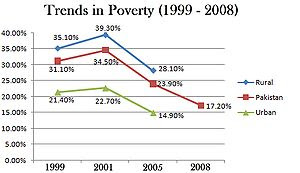Most Indians and Pakistanis Work in Agriculture and Textile Sectors

About 60% of India's workforce is in agriculture. Textile industry is the second biggest employer, accounting for a fifth of India’s exports, and employs almost 10 percent of India’s workforce, or some 35 million people, and has the potential to add another 12 million new jobs --dwarfing the 1-2 million jobs created by the much-heralded IT and BPO sector, according to a World Bank report . The largest number of people in other South Asian nations are also employed in the agriculture sector, followed by textile manufacturing as the second largest employer. About 60% of India's workforce is engaged in agriculture, contributing about 16% of GDP, according to published data . Textile manufacturing claims the second largest employment and comprises 26% of manufacturing output. It accounts for a fifth of India’s exports, and employs almost 10 percent of India’s workforce, or some 35 million people, and has the potential to add another 12 million new jobs --dwarfing the 1-2 mill

